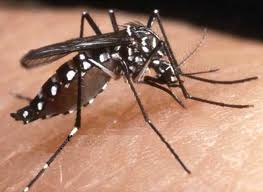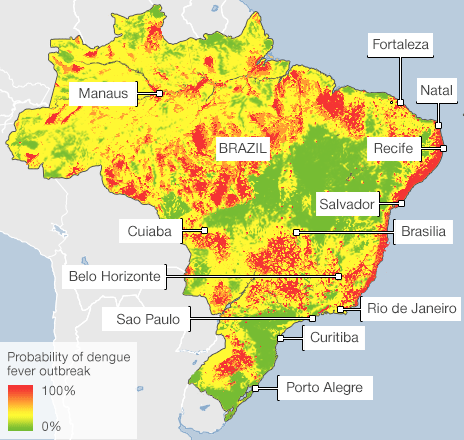
December 3, 2013 – Next year’s World Cup will be hosted by Brazil with many of the group-stage matches taking place in cities such as Fortaleza, Natal and Salvador. These three have something in common. They are located in Brazil’s northeast, a hotbed for exposure to tropical diseases. And the timing is perfect. Games will be played during the height of Dengue Fever season.
Dengue like malaria is spread by the Aedes, a day-biting mosquito. There is no vaccine as of yet to protect you from Dengue. Brazil’s public health surveillance system has created seasonal profiles for the disease. Take a look at the map of Brazil below and you can see those areas in red and orange which are at highest risk.
Dengue season peaks in March and April in southern coastal and interior cities in Brazil. But in the northeast where a number of matches will be held the Dengue season will extend much longer and peak in the June and July period right during the World Cup.
The August 2016 Summer Olympics to be held in Rio de Janeiro will be a much lower Dengue risk.
Dengue fever is not foreign to North America. Multiple cases were reported in Texas and Florida in 2010. Since then 26 other states from the Southeast to New Hampshire have reported cases. The cause of this migration appears to be climate change with plants and animals migrating northward right across the continent as winters become more moderate and summer temperatures rise.












